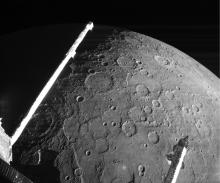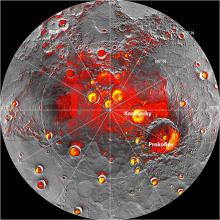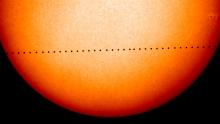Listen to today's episode of StarDate on the web the same day it airs in high-quality streaming audio without any extra ads or announcements. Choose a $8 one-month pass, or listen every day for a year for just $30.
You are here
Mercury in the Morning
The Sun’s closest planet is putting on a pretty good show in the early morning sky right now. It’s a bit north of due east as twilight paints the dawn, and quite low. That means you need a clear horizon to spot it. It’s pretty bright, though, and it’ll get brighter over the next couple of weeks.
Mercury is at a point in its journey across the sky known as elongation. That means it stands farthest from the Sun as seen from Earth. Because Mercury is closer to the Sun than any other planet, though, it doesn’t climb all that high. But it does get pretty bright. Tomorrow, it’ll shine at magnitude zero — brighter than all but a half-dozen other planets and stars.
We’re helped out a bit by the geometry of the solar system. At this time of year, the path followed by Mercury and the other planets is at a high angle, so Mercury pops almost straight up as it rises. And the Sun is rising later each morning, so that extends the viewing window.
Mercury is getting brighter by the day, too. Paradoxically, that’s because Mercury is moving farther from Earth. As it moves away, though, the side of the planet that faces Earth receives more and more sunlight. Tomorrow, for example, only about a third of that hemisphere is illuminated. By Tuesday morning, though, about half of it will be lit up. So Mercury will become an easier target over the next 10 days or so, before it once again drops too close to the Sun to pick it out.
Script by Damond Benningfield






